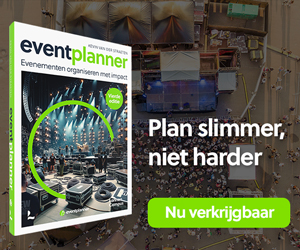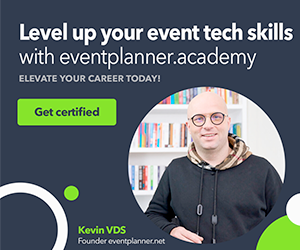Ben je een beetje onder de indruk van het enorme aantal bedrijven en merken die hun fysieke evenementen transformeren tot online events? Je voelt de aandrang om hetzelfde te doen, maar je weet niet goed hoe? Begin met dit artikel te lezen!
Fysieke evenementen zijn nog niet uitgestorven en het is zeker: op een bepaald moment komen ze terug. Maak ondertussen gebruik van deze tijd en exploreer je online opties. En nee, webinars tellen niet mee! Die kennen vele voordelen, maar ze missen de experimentele vibe en zijn helemaal geen volwaardige evenementen. Maar voor nu, nu we in dit ‘nieuwe normaal’ leven, is het misschien tijd om je allereerste virtuele topconferentie te organiseren.
Weet je niet goed wat een virtueel evenement is? Volgens ondernemer en uitgever Tom Morkes is het dit: “een virtuele top is een collaboratief, online event, dat een reeks van interviews met experten bevat. Zulk een evenement is typisch gefocust op een specifiek domein of niche.” Een virtuele topconferentie is dus een serie van keynote speeches, ronde tafels en netwerk belevingen die online gebeuren. Dat kan één dag duren, maar ook drie. Je conferentie kan gratis zijn of betalend. En wat het beste is, de content van je topconferentie kun je gebruiken als lead magneet, zelfs lang nadat je conferentie voorbij is.
Morkens verduidelijkt: “virtuele tops zijn heel effectief voor het genereren van traffic, leads en verkoop. En dit is waarschijnlijk al genoeg om er eentje te organiseren. Maar een virtuele top bezorgt je ook visibiliteit, het verhoogt je merkbekendheid, het helpt je een community te bouwen en het bezorgt je leads van een hoge kwaliteit. Ready? Hier is hoe je start en je eerste virtuele topconferentie launcht.
Stap 1: Kies de juiste eventtechnologie partner
Qua logistiek zijn online evenementen gemakkelijker om te organiseren, maar ze vereisten toch ook een goed online event platform. En we bedoelen niet Zoom of Google Hangouts. Je hebt goed presterende eventtechnologie nodig die je helpt een website te maken, een registratieproces op te zetten, online netwerk sessies te organiseren, engagement verhogende activiteiten in te plannen, de ROI te meten en analyseren, enzovoort. Je eerste stap moet dus het identificeren en selecteren van de juiste event technologie zijn.
Stap 2: Bepaal een krachtig onderwerp dat de interesse van je publiek triggert
De volgende stap is een interessant onderwerp bepalen voor je topconferentie. Dat onderwerp moet nauw genoeg zijn om een specifieke doelgroep aan te spreken, maar toch ook breed genoeg zodat je sprekers het van verschillende interessante kanten kunnen benaderen. Bovendien kun je je sprekers vragen om mee te brainstormen over de editoriale lijn van de top. Als je dit doet, dan ben je er zeker van dat je publiek waar krijgt voor zijn geld: namelijk topics die helemaal in hun interesseveld vallen. Als je daarentegen met een saai onderwerp komt, dan ben je gewoon bezig met hun noden te verwaarlozen, wat zeker leidt tot een lagere aanwezigheidsgraad.
Stap 3: Creëer een vriendelijk online programma
Hoe creëer je een programma voor je virtuele top en splits je de activiteiten correct op? Je hebt twee opties! Je organiseert je top op één dag, dan vind je het ok dat je deelnemers af en toe afhaken en terug aanhaken als er activiteiten of sprekers zijn die hen interesseren. Of je organiseert je event in kleinere sessies gespreid over enkele dagen, bijvoorbeeld twee uur per dag. Wat je ook kiest, in vergelijking met een fysiek evenement, de opkomst van een online evenement zal meer fluctueren.
Stap 4: Nodig sprekers uit van een hoge kwaliteit
Hoe wil je goede sprekers aantrekken wanneer je geen sterk merk hebt of je hebt nog niet eerder een topconferentie georganiseerd? Het geheim is de meest bekende namen links te laten liggen, en in plaats te gaan voor echte professionals die iets waardevol te delen hebben, maar het platform daarvoor tot nu toe nog niet kregen. Dit verhoogt je kansen op een ‘ja’, als je deze persoon vraagt als spreker.
Stap 5: Beslis hoe de productie er gaat uitzien
Wil je je conferentie filmen of streamen? Zitten je moderatoren en sprekers thuis bij hun laptop of in een professionele studio? Soms is het moeilijk om voor een professionele productie te gaan, maar het is altijd belangrijk om het esthetische element mee te nemen in hoe de algemene streaming er zal uitzien. Ga voor een fraaie achtergrond en op zijn minste, voor een professionele camera.
Stap 6: Ontwikkel engagerende momenten
Hoe ga je je deelnemers connecteren? Vergeet niet dat in het geval van virtuele topconferenties, je deelnemers heel wat afleidingen rond zich hebben. Om er zeker van te zijn dat ze hun aandacht bij de top houden en interageren, incorporeer je best engagerende sessies elke tien minuten. Dat kunnen live bevragingen zijn door de spreker of moderator of de deelnemers die vragen kunnen stellen. Deze eenvoudige strategie houdt de aandacht bij jouw virtuele conferentie.
Stap 7: Lanceer een promotiecampagne
Net zoals bij fysieke evenementen, wil je je marketingcampagne zo snel mogelijk lanceren. Wacht niet tot het laatste moment, creëer al content die je event gaat promoten. Moedig je medewerkers aan een event-gerelateerde e-mail signature te gebruiken. Vraag je sprekers en sponsors of je mag posten op hun websites. Maak korte video’s van je sprekers over hun hoofdthema’s. Ontwerp ook een krachtige e-mailmarketing campagne. Ten slotte, benader je websitebezoekers met advertenties en banners. Al deze kleine tips verhogen de bekendheid van je online event en leveren je meer deelnemers op.
Stap 8: Test alles voor je begint
Last but not least, zorg dat alles werkt voordat je start. Bij een fysiek evenement is het je AV-team dat de laatste testen doet, en zelfs als er iets misgaat, dan weet je dat het gefixt wordt. Bij online events hangt alles af van de technologie. Daarom is het cruciaal om verschillende testrondes te doen met je team en je sprekers zodat zij ook weten hoe het werkt op ‘le moment suprême’!
In het kort
Een virtuele top plannen vergt minder logistieke inspanningen, maar het is even stressvol als een fysiek event. Daarom heb je een heel team nodig dat je assisteert met de technologie, de editoriale lijn, het engagement met de sprekers, het programma-ontwerp, de formats van de engagementssessies, de productie, de promotionele campagne, en finally, de testen zodat je zeker bent dat alles werkt. Bereid je voor; je gaat super veel nieuwe dingen leren en hard werken om je eerste virtuele event te organiseren. Veel succes!
Engels
Do you feel overwhelmed by the number of companies and brands that transitioned from physical to online events? Do you feel you should be doing the same, yet aren’t sure where to start? You’re reading the right article, then!
Although physical events are far from extinct and we’ll most surely see a rebirth of the events industry at some point, you should definitely take advantage of this time and explore your online options … and no, webinars don’t count. While webinars have many benefits, they lack the experiential vibe and are far from being a full-fledged online event. But for now, while we’re in the “new normal,” maybe it’s time to launch your very first virtual summit.
Not sure what a virtual event is? According to entrepreneur and publisher Tom Morkes, "A virtual summit is a collaborative, online event, that features a series of expert interviews, typically focused on one specific area or niche.” In other words, a virtual summit is a series of keynote speeches, roundtable, and networking experiences that happen online. These events can be one day long or three days long—it’s your choice. Also, you can run a free or pay-to-attend virtual summit. Best of all, you can use your virtual summit content as lead magnets long after the event is over.
As Morkes highlights, “Virtual summits are effective for generating traffic, leads, and sales, quickly. And this by itself is probably enough to consider hosting a summit for your business.” Running a virtual summit will give you visibility, increase your brand awareness, help you build a community, and generate high-quality leads. So here’s how you can get started and launch your very first virtual summit.
Step 1. Choose the right event technology partner
Although online events are easier when it comes to setting up the logistics, they also require a good online event platform. And by a good platform, we don’t mean Zoom or Google Hangouts—you need performance event technology software that will help you create a website for the event, set up a registration, run online networking sessions, ensure maximum engagement, make sure the event is streamlined analyze the online event ROI, etc. So your first step should be focused on researching the event technology market and identifying your best option.
Step 2. Come up with a strong topic that’s aligned with your audience’s interests
Next, you’ll want to think about an interesting subject to present at your virtual summit. Your topic should be narrow enough to target a specific audience, yet wide enough to allow your speakers to find comfortable angles they could tackle. Moreover, you can ask your speakers to help brainstorm and design a strong editorial line for the summit. When you do this, make sure to take your audience’s needs and interests into consideration. If you come up with a subject that will bore your attendees, you’re essentially neglecting their needs, which will surely lead to a lower attendance rate.
Step 3. Create a friendly online event program
How do you create an event program for your virtual summit and also break down the activities correctly? Well, you have two options. You could run a virtual summit for one full day and be okay with the fact that your online attendees will disconnect periodically, reconnecting to those keynote speeches or activities that interest them the most. Or, you can break your virtual events into smaller sessions for a few days (for example, about two hours per day). Regardless of your choice, you’ll want to get comfortable with the idea that compared to a physical event, the attendance will fluctuate.
Step 4. Invite high-quality speakers
This one goes without saying, but how do you get good speakers when you don’t have a strong brand or haven’t run a virtual summit before? The secret is to avoid aiming for top-notch names, and instead, search for great professionals who have something to share, yet didn’t have a platform before. This will increase your chances of getting a “yes” from those people you want to invite as a speaker.
Step 5. Decide what the production will look like
How will you film or stream your virtual summit? Will the moderators and speakers be at home using their laptops? Will they be in a studio using professional cameras? In many cases, it can be difficult to ensure a highly professional production, but it’s important to recognize the aesthetic element and what the overall streaming will look like. Find a nice background and, at the very least, use a professional camera.
Step 6. Design the engagement sessions
How will you engage your attendees? Don’t forget that in the case of virtual summits, you’ll be dealing with online attendees who will have many distractions all around them. To make sure they stay present and interact with the event, incorporate special engagement sessions every ten minutes. For example, you can have the moderator or the speaker launch live polls or ask people questions, and then read the answers. This simple strategy will keep people paying attention to your virtual summit.
Step 7. Launch your virtual summit promotion campaign
As in the case of physical events, you’ll want to kick off your virtual summit marketing campaign as soon as possible. Don’t wait until the last minute—create content that will promote your event. Encourage your employees to add an event-related email signature. Ask your speakers and sponsors for permission to guest post on their websites. Film quick videos with your speakers about the main topics they’ll be addressing during the virtual summit. Design a powerful email marketing campaign. Finally, retarget your website visitors by creating virtual summit ad banners. All these little tips will increase awareness about your online event and get you more attendees.
Step 8. Test everything before the event
Last but not least, make sure that everything works properly before the event. During physical events, you’ll have an A/V team running the tests, and even if something fails, you know that it will get fixed. When it comes to online events, however, everything depends on technology. That’s why it’s crucial to test everything out several times with your team and your speakers so that they know how to use everything on the day of the summit.
Final thoughts
Although planning a virtual summit may involve fewer logistics, it isn’t any less stressful than planning a physical event. That’s why you’ll need the help of an entire team who’ll assist you with setting up the event technology, creating the editorial line, engaging with the speakers, designing the event program, deciding on the format of the engagement sessions, working on production, designing a promotional campaign, and making sure that everything works correctly on the day of the event. So be prepared for learning new things and working hard to release your virtual summit.








